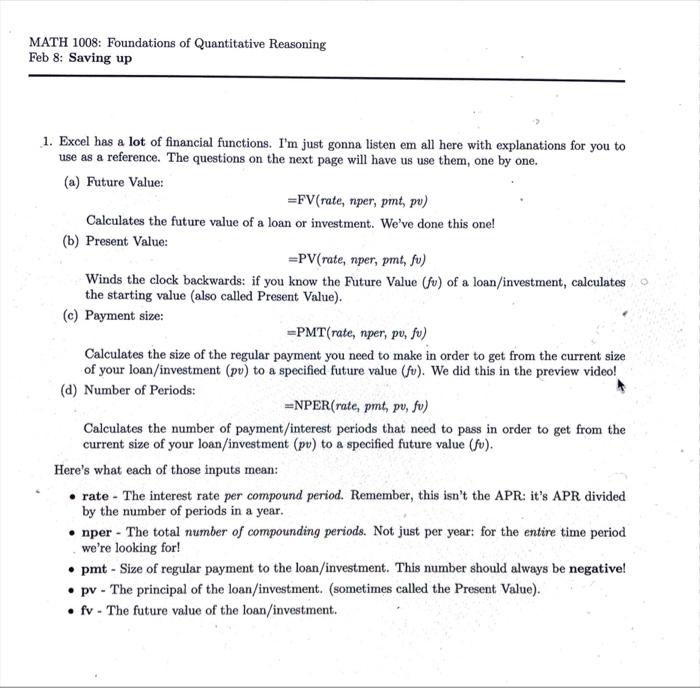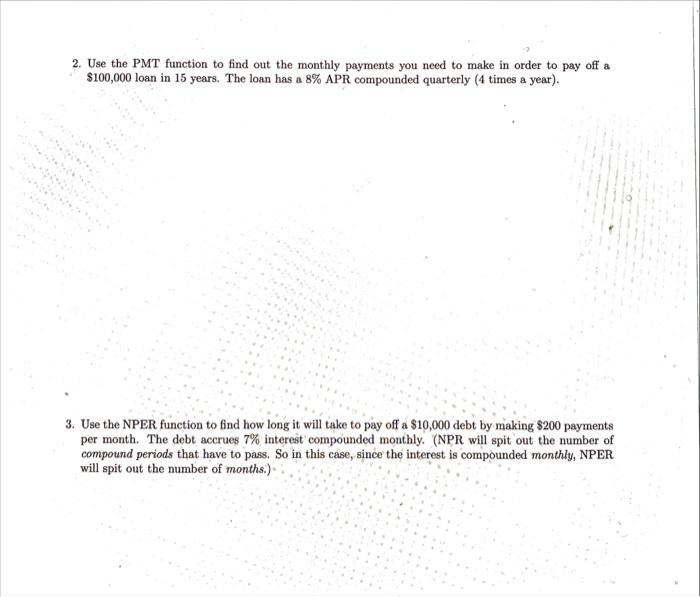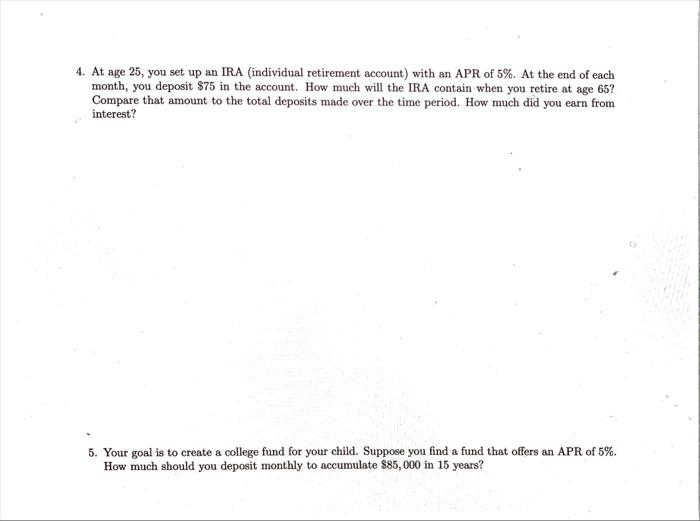MATH 1008: Foundations of Quantitative Reasoning Feb 8: Saving up 1. Excel has a lot of financial functions. I'm just gonna listen em all here with explanations for you to use as a reference. The questions on the next page will have us use them, one by one. (a) Future Value: =FV (rate, nper, prt, pu) Calculates the future value of a loan or investment. We've done this one! (b) Present Value: =PV(rate, nper, pmt, fu) Winds the clock backwards: if you know the Future Value (u) of a loan/investment, calculates the starting value (also called Present Value). (c) Payment size: =PMT(rate, nper, pu, fu) Calculates the size of the regular payment you need to make in order to get from the current size of your loan/investment (pv) to a specified future value (su). We did this in the preview video! (d) Number of Periods: =NPER(rate, put, pv, fu) Calculates the number of payment/interest periods that need to pass in order to get from the current size of your loan/investment (pu) to a specified future value (fu). Here's what each of those inputs mean: rate - The interest rate per compound period. Remember, this isn't the APR: it's APR divided by the number of periods in a year. nper - The total number of compounding periods. Not just per year: for the entire time period we're looking for! pmt - Size of regular payment to the loan/investment. This number should always be negative! pv - The principal of the loan/investment. (sometimes called the Present Value) fv - The future value of the loan/investment. 2. Use the PMT function to find out the monthly payments you need to make in order to pay off a $100,000 loan in 15 years. The loan has a 8% APR compounded quarterly (4 times a year). 3. Use the NPER function to find how long it will take to pay off a $10,000 debt by making $200 payments per month. The debt accrues 7% interest compounded monthly. (NPR will spit out the number of compound periods that have to pass. So in this case, since the interest is compounded monthly, NPER will spit out the number of months) 4. At age 25, you set up an IRA (individual retirement account) with an APR of 5%. At the end of each month, you deposit $75 in the account. How much will the IRA contain when you retire at age 65? Compare that amount to the total deposits made over the time period. How much did you earn from interest? 5. Your goal is to create a college fund for your child. Suppose you find a fund that offers an APR of 5%. How much should you deposit monthly to accumulate $85,000 in 15 years? 6. You would like to retire 25 years from now and have a retirement fund from which you can draw an income of $50,000 per year - forever! How can you do it? Assume a constant APR of 7%. (Extra explanation since none of ya'll are retiring any time soon: A retirement account is an account set up with enough money that the interest it generates each year is enough to withdraw and live off of. Since you're just withdrawing the interest and not the principal, you never run out of money! It's magic!)










